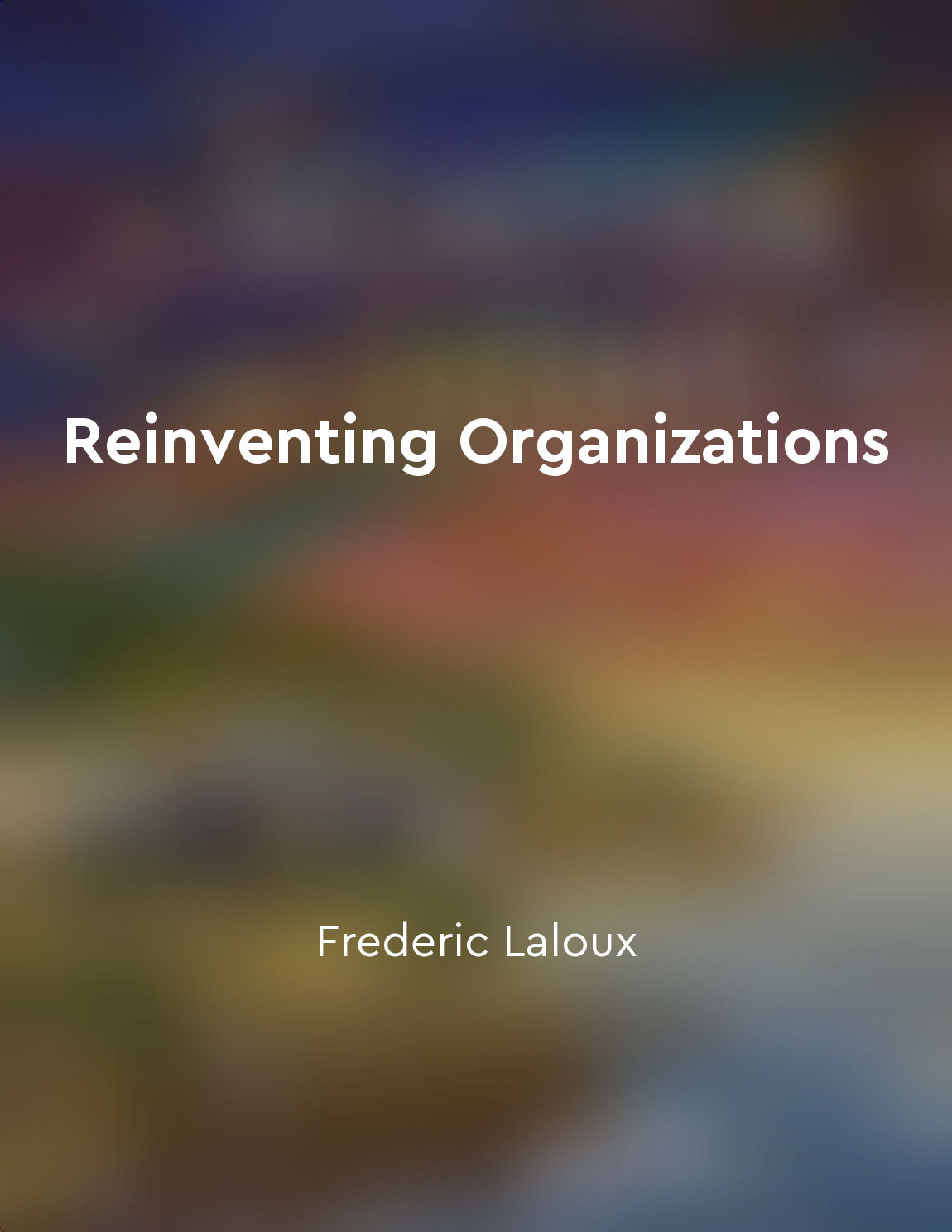Teams are selforganizing and self-regulating from "summary" of Reinventing Organizations by Frederic Laloux
Teams in self-organizing and self-regulating organizations possess a unique characteristic that sets them apart from traditional hierarchical structures. This concept signifies a fundamental shift in how teams operate and make decisions. Rather than relying on top-down directives, teams are empowered to organize themselves and regulate their own activities. The principle of self-organization is grounded in simplicity and clarity. It recognizes that individuals within a team are capable of taking ownership of their work and collaborating effectively without the need for constant supervision. This autonomy allows teams to adapt quickly to changing circumstances, make decisions in real-time, and respond creatively to challenges as they arise. In self-organizing teams, there is a natural flow of authority and responsibility that emerges organically from within the group. This fluidity fosters a sense of ownership and accountability among team members, as they collectively determine how best to achieve their goals. By distributing decision-making power evenly across the team, self-organizing structures promote a culture of trust, collaboration, and innovation. Self-regulating teams are adept at setting their own boundaries, defining their objectives, and monitoring their progress. This autonomy enables teams to establish clear norms and standards of behavior without external interference. By holding themselves accountable for their actions and outcomes, teams are better equipped to self-correct, learn from mistakes, and continuously improve their performance. The concept of self-organization and self-regulation is not a free-for-all but rather a structured approach to teamwork that values autonomy within a framework of shared purpose and values. Teams in self-organizing and self-regulating organizations are guided by a common vision and a set of principles that provide a cohesive structure for decision-making and collaboration. This alignment ensures that teams stay on track, even as they navigate complex challenges and opportunities.- The concept of self-organizing and self-regulating teams represents a paradigm shift in organizational design, one that empowers individuals to work together with greater autonomy, creativity, and accountability. By embracing this principle, organizations can unleash the full potential of their teams and achieve higher levels of performance and fulfillment.
Similar Posts
Create a strategy for overcoming obstacles
When faced with obstacles, successful teams create a strategy for overcoming them. This strategy involves several key component...
Use criticism as a learning opportunity
Criticism is often seen as something negative. But it doesn't have to be. You can use criticism as a chance to learn and improv...
Trust is built through consistent actions and integrity
Trust is something that is earned, not given. It is forged through consistent actions and integrity. When you consistently do w...
Empower others to take action
Empowering others to take action is all about giving them the tools, resources, and support they need to make a difference. It'...

Identify goals and create actionable strategies
Identifying goals is a crucial step in the coaching process. It involves understanding what the coachee wants to achieve and se...
Set clear goals and hold yourself accountable
To be an effective leader, it is crucial to establish clear goals for yourself and your team. Setting goals provides direction ...
Diminishers resist change and foster resistance
Diminishers are known for their resistance to change and their ability to sow seeds of resistance among their team members. The...

Decisionmaking is key in reaching success
Decision making is a crucial element in the journey towards success. Without the ability to make decisions and take decisive ac...
Strive for worklife balance
To truly thrive in the workplace, it is crucial to find a balance between our professional responsibilities and personal lives....
Failure is a part of the innovation process
Innovating isn't always a smooth journey. It's more like navigating a minefield than strolling through a park. Failure is an in...


